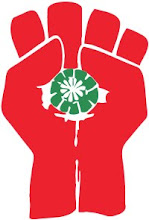I have mixed feelings over the current financial problems suffered by the Institute of Contemporary Arts, but, over the last few years, the ailing institution has seemingly done everything in its power to erode any goodwill amongst the public and artists alike.
That goodwill was originally quite substantial. The ICA holds a near legendary status as a bridge between the fringe and the establishment, where the most exciting new arts would take their first steps into the spotlight, In the 1940’s, the ICA's founders intended to establish a space where artists, writers and scientists could debate ideas outside of the traditional confines of the Royal Academy. During its heyday in the 1950s and 1960s it was home to an early exhibition of works by Jackson Pollock, the American abstract expressionist, as well as the first British Pop Art show. It held this unique position up to the early 1990s, when it staged shows by Damien Hirst and Jake and Dinos Chapman and advocated the emergent YBAs.
However, since the middle of that decade, its association with pioneering artworks comes to an abrupt halt and it’s been almost 15 years since the ICA has held an event or exhibition of note. This is fundamentally due to a loss of identity that has seen it increasing positioning itself as a museum of past glories – engaging with the established contemporary ‘commercial’ trends instead of searching out the challenging and ‘dangerous’ of the finges. An institution whose raison d’etre was to take risks on a very prominent and public scale has suddenly limited its scope to a dialogue with the fringe arts of its heyday, a territory already well covered by our generously museume’d capitol.
Ekow Eshun, the current artistic director, has paid much lip service about deliberately eschewing big-name established artists – yet at the same time has restricted programming, limited experimental and community projects and instead foolishly attempted to compete with far larger public arts venues such as Tate Modern, the Barbican and the South Bank centre. The ICA was established because London had commercial and public art spaces, but lacked a prominent enough experimental venue. Ekow should also note that the ICA was NEVER about big-name established artists, its power was the fact it exhibited people before they became big-name established artists. Some of these artists would have had difficulty exhibiting on that profile anywhere else in central London.
This is depressing, because the ICA is quite unique in this role. We still have an art ‘establishment’ as exclusive and difficult to access for the artist as the Academy and Cork Street were in the 40’s. Similarly, we have a fringe arts community still just as marginal to commercial and critical regard. The ICA, as it was intended, has a huge role to play yet. Nevertheless, to maintain relevance as long as it did – almost 50 years – is a huge achievement. Perhaps, its gradual loss of identity – and absorption into the mainstream was inevitable.
About one third of the ICA’s 90 staff are now to lose their jobs and exhibitions are to be scaled back. Perhaps a recent Arts Council Grant may help change direction at the ICA and save further redundancy?
I sincerely hope so.
If not, then perhaps right now we should be looking not for the artists of the future, but instead toward the next generation of pioneering curators and gallerists to help fill that void.


No comments:
Post a Comment